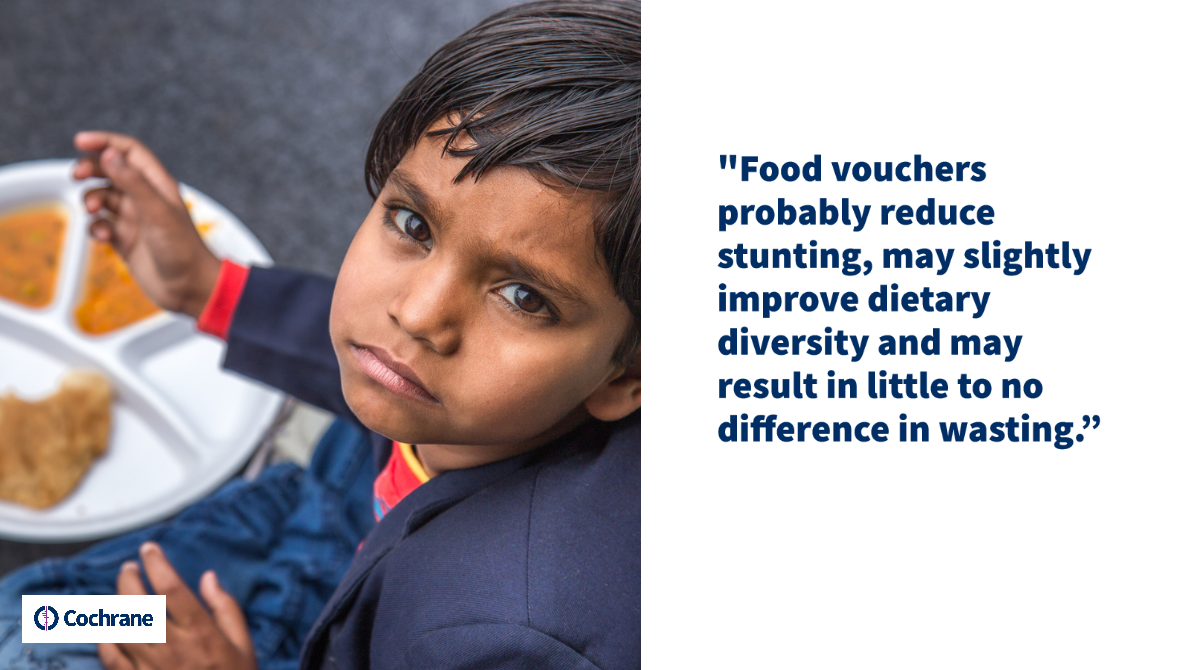
Community‐level interventions for improving access to food in low‐ and middle‐income countries
The number of people who do not have enough to eat in the world has been increasing since 2015. Most of these people live in low- and middle-income countries (LMICs), especially in Asia and Africa. Food insecurity is when people do not have physical, social and economic access to sufficient, safe, nutritious foods to be healthy. That is, they do not have enough money to buy food, or do not have anywhere to shop or cannot find food near to where they live. Food insecurity affects the health, social and economic situation of individuals and communities.
COVID-19 and food insecurity
Food insecurity has increased as a result of measures implemented throughout the world to prevent the spread of COVID-19. ‘Lockdowns’ restrict people’s movement and their ability to work, leading to loss of income and livelihoods, particularly for people in the informal economy. This, in turn, limits people’s physical and economic access to food. Disruptions to food supply, from harvesting to transport to labour supply, negatively affect food prices and availability. School closures affect millions of children who access food through school meal schemes. The effects of lockdown are felt everywhere, but disproportionally affect poor and vulnerable people.
This Cochrane Review looked at the effect of community-level interventions on individuals, households and communities in LMICs to improve access to nutritious food. The main outcome was food security, measured by prevalence of undernourishment, proportion of household expenditure on food, and proportion of people and households who ate a diverse diet, that is, a variety of foods from different food groups. Other outcomes reflected nutritional status, such as how well children grew (stunting), low body weight (wasting) and cognitive function (thoughts and understanding).
Key results
The review authors found 59 studies that assessed different interventions, mainly in Africa and Latin America. Many studies assessed cash transfers, which are welfare programmes where money is provided to households. Of these, 21 studies evaluated unconditional cash transfers, where there are no conditions for receiving the money, and 14 studies assessed conditional cash transfers, where people had to meet specific conditions in order to receive the money. Seventeen studies looked at income generation interventions (for example, livestock management or self-help groups), four studies at food vouchers, four studies at providing food and nutrition subsidies, and two studies looked at social support interventions such as village savings and loans and community grant programmes.
Unconditional cash transfers improve food security but make little or no difference to cognitive function or development. They may increase dietary diversity and may reduce stunting. It is very uncertain whether unconditional cash transfers reduce the proportion of household expenditure on food or reduce wasting. Evidence from one study indicates that unconditional cash transfers reduce the proportion of infants who are overweight.
Conditional cash transfers make little to no difference in the proportion of household expenditure on food and slightly improve cognitive function in children, probably slightly improve dietary diversity, and may make little to no difference to stunting or wasting. Evidence from two studies shows that conditional cash transfers make no difference to the proportion of overweight children.
Income generation strategies make little or no difference to stunting or wasting, may result in little to no difference to food security and may improve dietary diversity in children but not for households.

Food vouchers probably reduce stunting, may slightly improve dietary diversity and may result in little to no difference in wasting.
Food and nutrition subsidies may improve dietary diversity among school children. We are very uncertain about the effects on household expenditure on healthy foods as a proportion of total expenditure on food.
Social support interventions such as community grants probably make little to no difference to wasting and may make little or no difference to stunting. We are very uncertain about the effects of village savings and loans on food security or dietary diversity.
None of the included studies reported on one of the primary outcomes: prevalence of undernourishment.
Conclusions
This review provides policy makers with a comprehensive evidence base to evaluate the effects of a wide range of community-level interventions to address access to food in low- and middle-income countries (LMICs). The body of evidence indicates that UCTs can improve food security but the review authors are less sure about the effects of other interventions. Some limitations of the review include not having all necessary information about what outcomes the studies measured, having to make judgements regarding which outcome measures to report and inability to pool the results of all studies reporting on the same outcome. Another limitation was that the review authors were unable to find out what specific intervention features enable or impede the effective implementation of the intervention. and Malay
- Read this news item in German and Malay
- Read the full Cochrane systematic review
- Visit the Cochrane Public Health website

